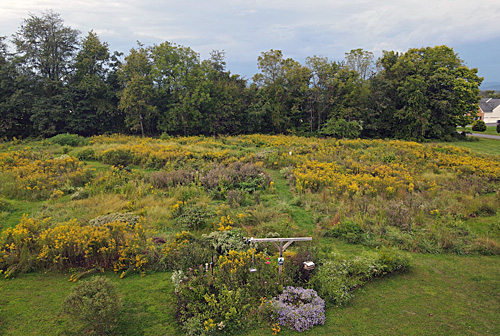Downpours of rain the previous weekend changed our meadow walk to October 1, which was a gorgeous, sunny fall Sunday. Led by BJ Lecrone, participants enjoyed the sounds of grasshoppers and crickets and the abundance of goldenrod in the meadow. We watched many pollinators happily feeding, including a Buckeye, skippers, fritillaries and an assortment of bees and wasps. A lone Monarch floated by, and we wondered why it didn’t stop to eat for a while at this natural oasis. Each of the participants shared their desire to mow less of their non-HOA properties to create areas that are beneficial to the butterflies, birds and bees

Meadow in Hamilton.
Photo by BJ Lecrone
We talked about the different types of grasses in this Hamilton meadow such as Indian Grass, Big Bluestem and invasive Johnson Grass. We also discussed the importance of keeping ahead of some of the typical non-native invasive plants like Japanese Honeysuckle, Bradford Pear and Tree of Heaven. We pointed out native plant favorites and shared seeds with participants to take home and grow themselves.
Resources for learning more about meadows, native plants and butterflies are listed below.
YouTube recordings about Native Plants and Meadows: Native Plant Garden Design and Tools with Susan Abraham; and HOA Native Plant Landscape Tours at Willowsford and Rivercreek.
Winter Sowing recordings on YouTube.
Agnes Chase’s First Book of Grasses: The Structure of Grasses Explained for Beginners (Highly recommended by Matt Bright at Earth Sangha.)
Field Guide to the Butterflies of Loudoun County.
Plant Invaders of Mid-Atlantic Natural Areas. An updated print version is also available.
Northern Virginia Wildlife Gardening Database based on information found in Planting for Wildlife in Northern Virginia.
Plant NOVA Natives website.
Native Plants for Northern Virginia guide.

